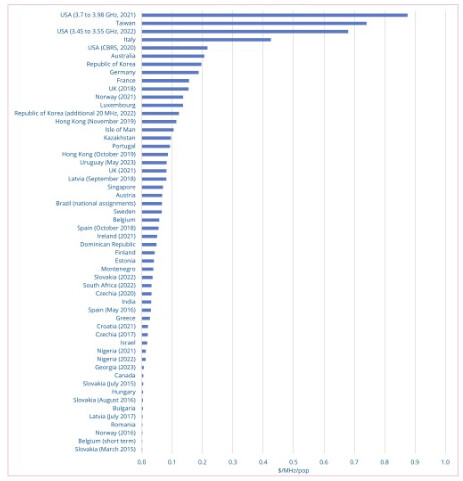Prices paid for millimeter-wave ( mmWave) spectrum have been much lower than those for C-band spectrum to date.
There are a few reasons for this:
-
MmWave spectrum is less desirable for mobile broadband services.
MmWave signals have a shorter range and are more susceptible to blockages than C-band signals, so they require a denser network of base stations to provide the same level of coverage and performance. This makes mmWave networks more expensive to deploy and operate. -
There is less competition for mmWave spectrum.
Fewer mobile operators have expressed interest in mmWave spectrum than in C-band spectrum, so there is less competition in mmWave auctions, which drives down prices. -
MmWave spectrum is still relatively new and unproven.
MmWave networks are not yet widely deployed, so there is less certainty about their performance and cost-effectiveness. This uncertainty makes mobile operators less willing to pay high prices for mmWave spectrum.
Despite the lower prices, mmWave spectrum is still important for 5G. MmWave bands offer much more bandwidth than C-band bands, which enables much faster data speeds. MmWave spectrum will be essential for supporting high-bandwidth applications such as augmented reality, virtual reality, and self-driving cars. ar vr autonomous
As mmWave networks become more widely deployed and their benefits are more fully realized, it is likely that the prices for mmWave spectrum will increase. However, it is also likely that the gap in price between mmWave and C-band spectrum will remain, as C-band spectrum is still more desirable for mobile broadband services.

LinkedIn: ![]()